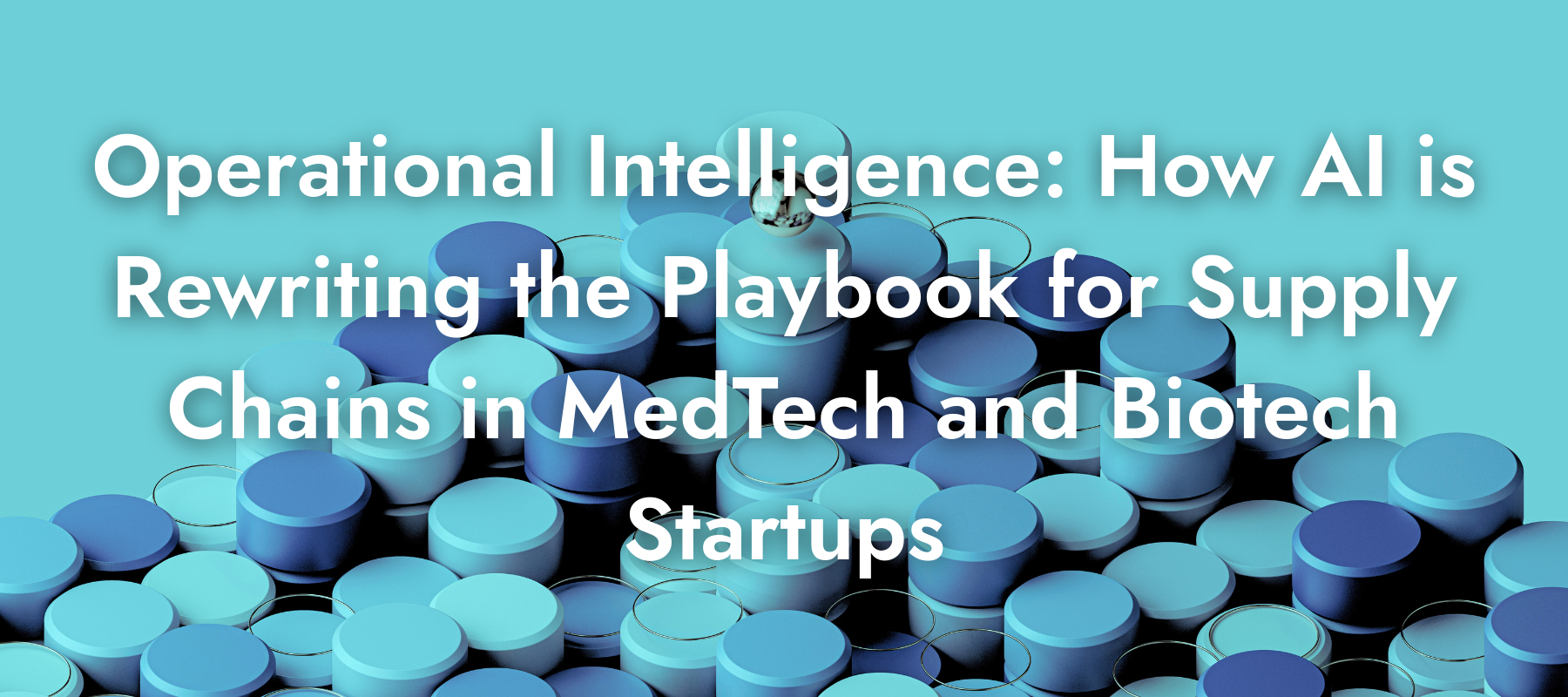Operational Intelligence: How AI is Rewriting the Playbook for Supply Chains in MedTech and Biotech Startups
In the race to bring innovative medical products to market, startups in biotech and medtech face a paradox: they must move fast while navigating some of the most regulated, complex, and risk-sensitive environments in the business world. Traditional operational approaches are buckling under the weight of this dual pressure. Enter Artificial Intelligence, not as a buzzword, but as a pragmatic enabler of a new kind of operational intelligence.
Much of the hype around AI in healthcare revolves around diagnostics, imaging, and predictive modeling. Yet, behind every groundbreaking therapeutic lies a less glamorous but equally critical domain: operations. Supply chains, regulatory data management, and vendor qualification processes are riddled with bottlenecks that consume time, budgets, and human focus. Large Language Models (LLMs) and AI-native tools are now emerging as force multipliers, allowing lean teams to achieve operational resilience and compliance at scale.
Take supplier qualification as an example. A biotech startup aiming to produce a temperature-sensitive therapy may need to vet dozens of suppliers across packaging, logistics, and raw materials, each with its own regulatory documentation and audit requirements. Traditionally, this involves weeks of emails, PDF parsing, and Excel management. With AI-powered assistants trained on regulatory frameworks, startups can now automate the extraction, classification, and risk-scoring of supplier data, turning a multi-week process into a 48-hour sprint.
In one real-world scenario, a client in the pharma logistics space used a GPT-powered plugin built with OpenAI’s API and embedded in Google Workspace to analyze incoming supplier certifications directly from email attachments and generate a structured risk report that integrated with their QMS (Quality Management System). The tool saved over 60% of manual labor hours and eliminated redundant compliance checks.
Another area undergoing transformation is cold-chain logistics. Using predictive AI models, companies can anticipate where a shipment may be delayed or a temperature threshold exceeded, and trigger preemptive interventions. When LLMs are integrated into control tower interfaces, operations managers gain a real-time narrative summary of supply chain health, with plain-language suggestions and historical benchmarking, something previously reserved for Fortune 500 firms.
One biotech startup I supported built an internal GPT-based dashboard (not commercially available) using OpenAI’s API and integrated with Google Sheets and Slack that synthesized real-time shipment data from multiple carriers. The system provided alerts in natural language, such as “shipment 004 from Munich to TLV at risk of exceeding 8°C – ETA update suggests alternate routing via Prague,” empowering operations teams to respond without needing deep analytics skills.
Furthermore, the regulatory narrative, often seen as a burden, is now becoming a strategic asset. AI can generate tailored audit trails, pre-populate technical files, and even draft QMS responses, ensuring that regulatory readiness is embedded into every phase of development. Of course, when implementing such solutions in such a sensitive field, data security and privacy must be paramount, with stringent security measures and adherence to strict privacy standards.
This is not about replacing humans. It’s about augmenting small, over-stretched teams with operational superpowers. In the coming years, startups that treat AI as part of their infrastructure, rather than an add-on, will be the ones that outmaneuver both incumbents and complexity. However, it’s crucial to acknowledge that despite the potential long-term savings, the initial investment costs in developing and implementing tailored AI systems can be significant, requiring careful budgetary planning. Furthermore, there are implementation challenges that need to be addressed, requiring technical expertise and the ability to integrate with existing systems.
But how can organizations trust AI tools in such sensitive domains?
Validation is a critical milestone.companies should evaluate these tools through sandbox testing (a way for trying out an AI tool in a safe, isolated environment), benchmark outputs against expert human review, and ensure they align with GxP or ISO-compliant documentation standards. Today’s leading tools increasingly provide audit trails, transparency dashboards, and explainability features that allow QA and compliance teams to trace each AI-driven decision. In regulated environments, it’s not just about speed it’s about reproducibility, traceability, and risk mitigation.
Example of tools supporting validation and auditability:
- TruLens: Tracks LLM behavior, provides explainability and evaluation of AI responses. trulens.org
- Weights & Biases: Monitors AI model runs, parameters, and outcomes for full traceability. wandb.ai
- ClearML: Offers reproducibility, experiment versioning, and audit logging across the ML lifecycle. clear.ml
The operational backbone of innovation is being rebuilt, not with more people, but with smarter systems. And for medtech and biotech startups, that shift is not a luxury, it’s the edge, a winning position !

Subscribe Now to the Bio-Startup Standard
Notify me for the next issue!



